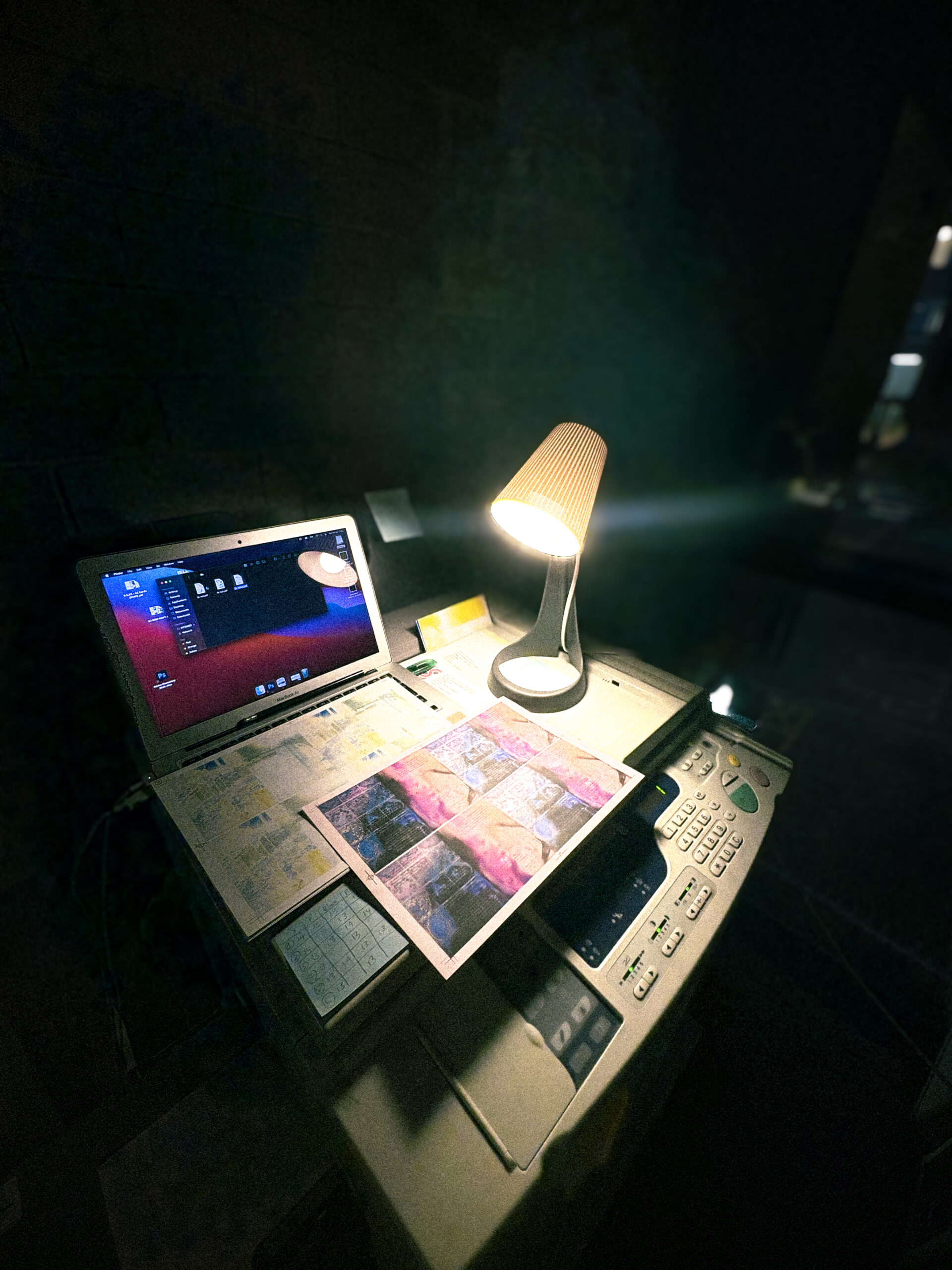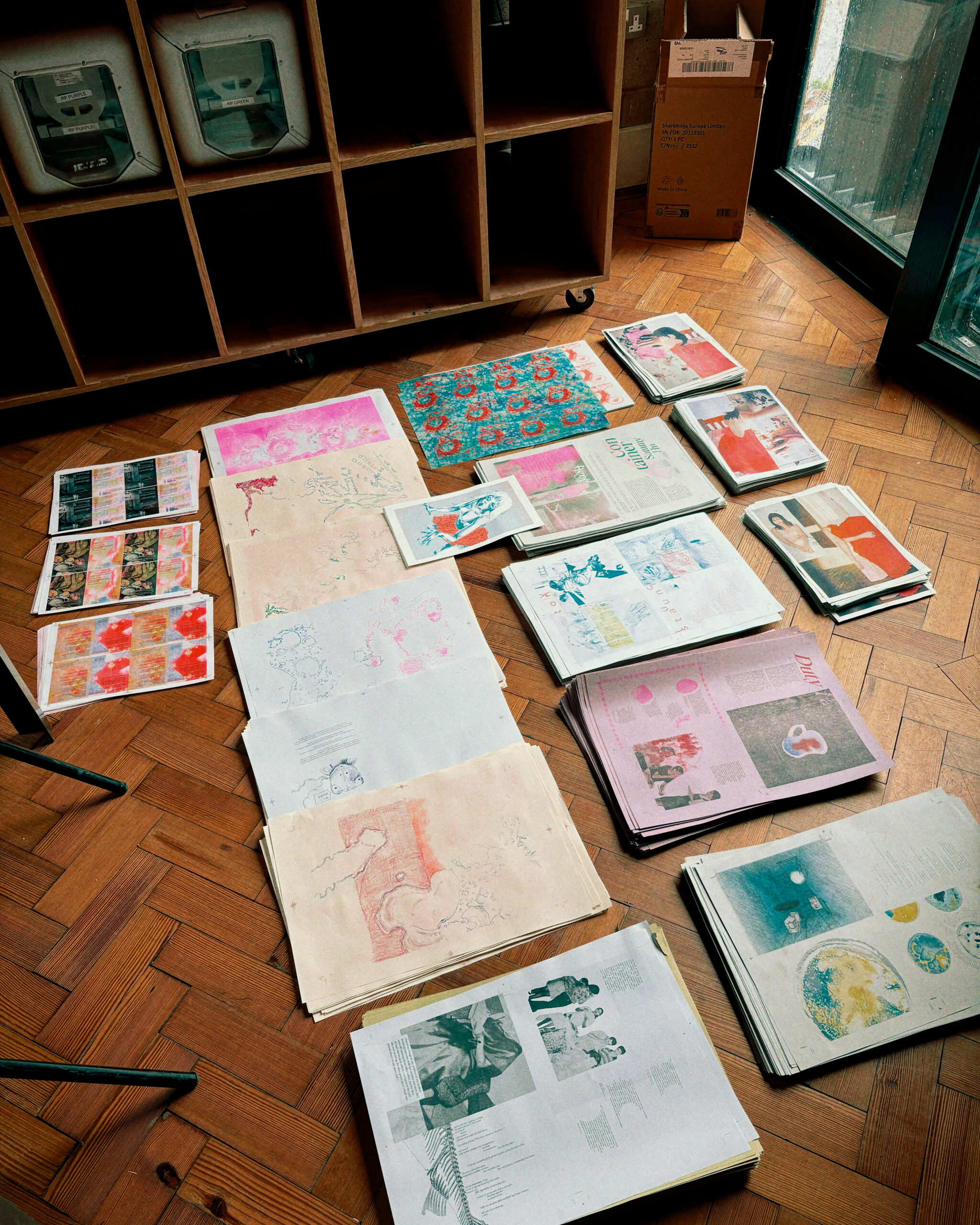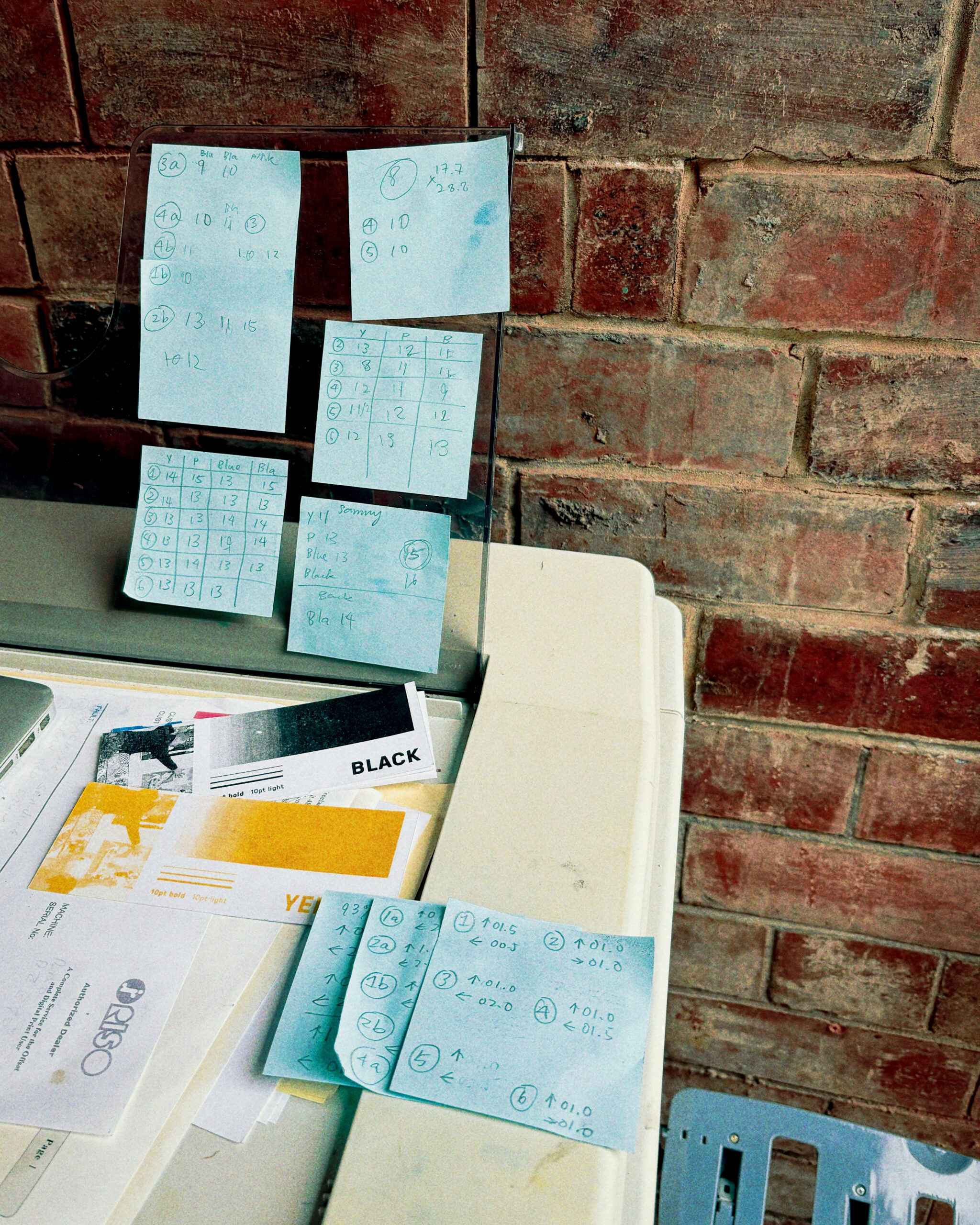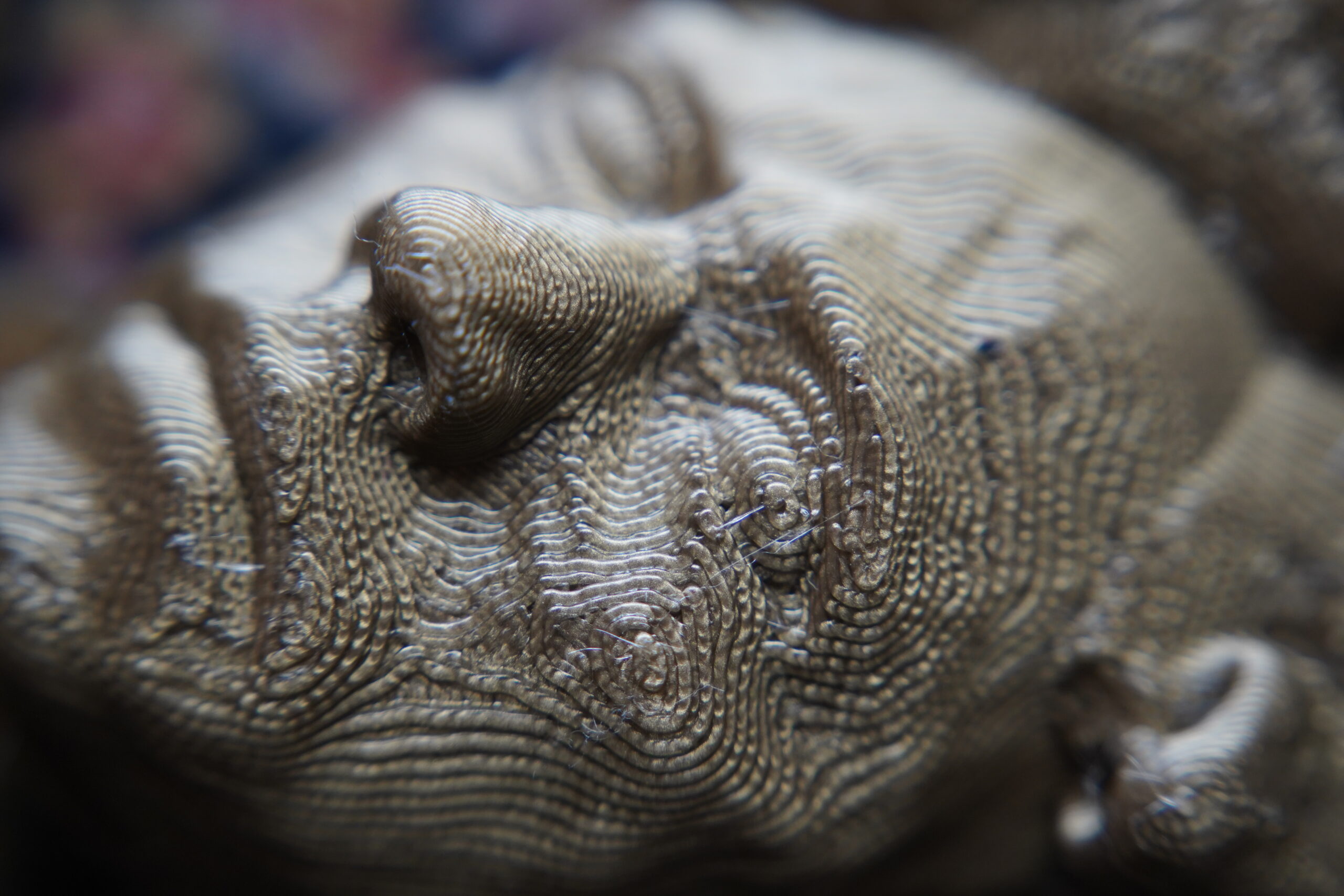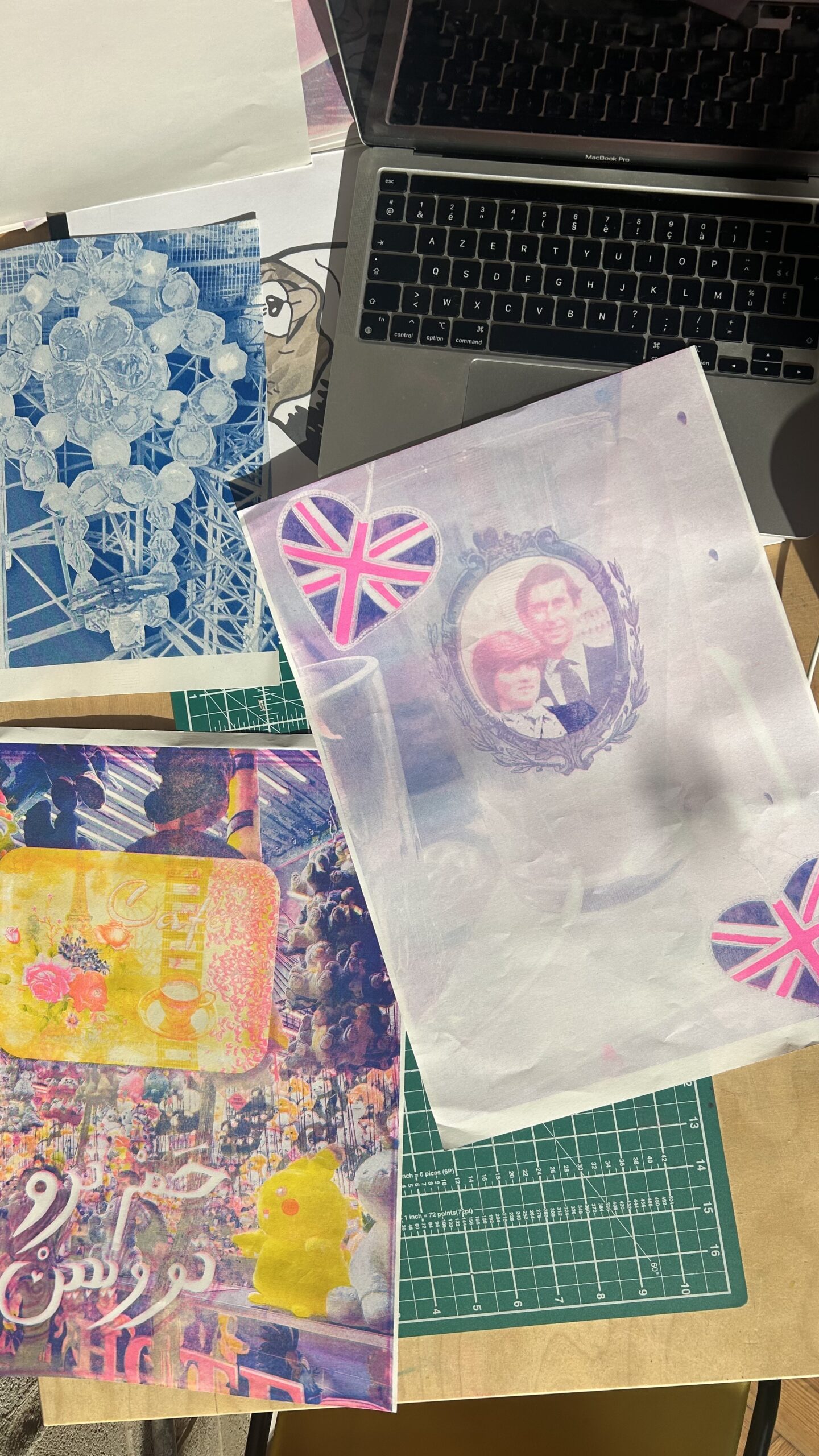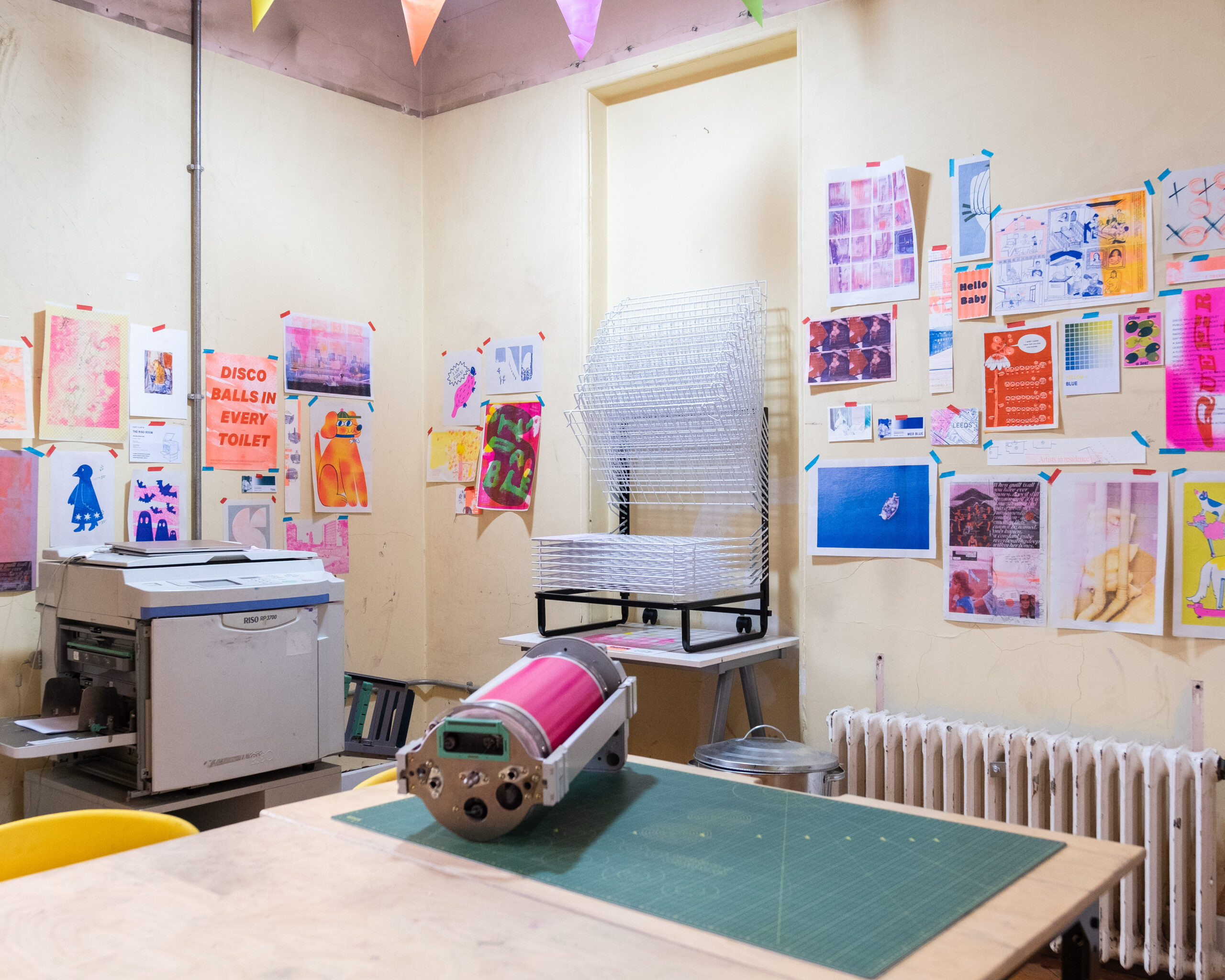Wan Yee Sin is an artist working across different disciplines, and reflects on their time at Convention House during their Risograph Residency
Wan Yee Sin is a multidisciplinary artist specialising in affordable and accessible publishing practices. Her works often focus on resisting the binary limitation of political expressions and framing contemporary political commentaries in a vulnerable and personal manner.
How would you describe your practice, and what have you been working on in the Riso room?
I am always thinking of ways to produce accessible published art—using economically sustainable methods to disseminate it, while pushing the boundaries of the traditional zines/book format. I am slowly transitioning my practice into more community-based publications, hosting open calls, platforming artists, and encouraging conversations. It is hard to pinpoint what my practice is, but I’d quite like it to be “switching contemporary art from its narcissistic self into an act of care and connection”.
I worked on several projects during my time in the Riso room. The main one is a publication called “Bound by Blood/Water”, which consists of 11 artists’ works dissecting their personal experiences with Asian familial guilt and toxic collectivism. Another one is a concertina zine, “Entering the Mandelbrot Set”. Entering the Mandelbrot Set was a workshop hosted by my publishing collective, exploring the forms of the fractal graph Mandelbrot Set. I mass printed these two zines, which is sort of embarrassing, but I don’t get my hands on a Riso machine very often. I’ve also printed some prints.
Describe Riso Printing in three words
melodramatic, technical, violent.
Which part of the creative process in Riso printing inspires you the most?
Riso printing is an interesting pendulum swinging between order and chaos. On the one hand, there’s the precision of separations and registrations, and the proficiency with inks and colours, with only one master to waste per page; on the other, the machine’s unpredictability—there will always be misalignments, roller stains, and surprise missing ink patches. Yet, I love the thrill of knowingly chasing perfection within a machine of imperfection, because that’s where many of the unexpected happen.
For example, while I was printing photographs during the residency, I layered three inks to ensure the product came out as accurate to the original as possible. The extremely heavy ink coverage, the ink patches, and the texture of my sugar papers, surprisingly, produced these beautiful oil-pastel effects on the photos, making them almost painting-like. Especially when I was working with the older printers in Convention House, pages, inks, and mis/alignments just bled into each other. No matter how hard I try, the machines always give me cheeky surprises.
Risograph does makes me feel a bit like a mad scientist clinking test tubes and micro-scales together in a beautiful Victorian home, spilling chemicals onto her intricate notebook filled with diagrams and fantasy. A bit freaky, but that is precisely why I love Riso printing.
If you could only use two colours, what would they be and why?
Fluorescent orange and Blue. Fluorescent orange is highly pigmented, so it works on all sorts of papers, light or dark, rough or smooth. Blue… it just looks cool next to Fluorescent orange.
Has your time in the risograph room changed how you work or think?
Instead of changing how I work, it reminded me of things that I already knew but kept forgetting.
I wish I had seen this residency as a chance to learn and experiment, rather than pushing myself to finish all the projects I had in mind. I was printing 20 hours a day, only stopping to eat and nap, popping painkillers, just because of some ridiculous goals I’ve set for myself. Meanwhile, I could’ve played around with the scanners, tried out different papers, or even just sat and sketched on the balcony like I wanted to. I would’ve taken away a lot more if I had given myself the space to learn.
Especially as self-employed artists, it is difficult to tell where the line is. Sometimes it is harder to stop than to keep going. I guess amidst this hustle-culture, late-capitalist climate, you have to learn to know when to stop, and keep reminding yourself when you forget.
What piece of advice would you give to someone who wants to start using Riso?
All the machinery can be very intimidating, but there are many professional Riso studios across the UK offering inductions and beginner workshops at a very decent price. It is always easier to take your first step with someone holding your hand. And of course, don’t forget to mess around and experiment with the medium and take full advantage of what riso printing can offer!
Find Wan Yee Sin:
wan-yee-sin.com | @froggy_popcorn.mp3

